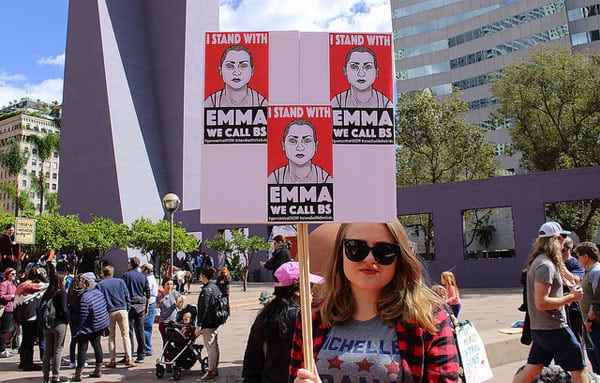
May 30, 2018; Teen Vogue
“In order to understand the challenge of building a representative anti-gun violence movement in Birmingham, one must examine the state of segregation in Jefferson County,” writes Lizzie Shackney in Teen Vogue. At NPQ, we have written about school segregation many times before. The data are disturbing and point to a pattern of increasing segregation. For example, in 1980, only 1.7 percent of Blacks attended a school that was less than 10 percent white. But by 2010, that figure had climbed to 25.6 percent.
Among that 25.6 percent—and it’s possible that percentage is higher today—are the children in Birmingham, Alabama’s public schools. Birmingham City Schools (BCS) enrolls nearly 25,000 students, 95 percent of whom are Black; 99 percent are students of color. By contrast, Shackney points out, “high schools in suburban school districts such as Hoover, Mountain Brook, Trussville, and Vestavia Hills are majority white.”
“It’s likely,” Shackney adds, “that the barriers to inclusive, coalition-based organizing derive from systems set up long ago to prevent the recognition of shared interests and collective action.”
Take, for example, the youth organizing movement against gun violence that has emerged in the aftermath of the mass shooting last Valentine’s Day in Parkland, Florida. “The March for Our Lives Birmingham organizers,” Shackney notes, “all attended either suburban schools or the University of Alabama at Birmingham.”
Sign up for our free newsletters
Subscribe to NPQ's newsletters to have our top stories delivered directly to your inbox.
By signing up, you agree to our privacy policy and terms of use, and to receive messages from NPQ and our partners.
The disparity became even more evident, when, tragically, on March 7th, three weeks after the Parkland murders, 17-year-old Courtlin Arrington “died after she was shot in an act of gun violence at Huffman High School.” Huffman is part of the Birmingham public school system, yet “no BCS students served as core [anti-gun-violence march] organizers.” Two weeks prior to the March 24th rally, J’Corion Johnson, student body president at Phillips Academy, a school in the BCS system, was invited to speak; until that point, the slated speakers had all been white.
Shackney notes that BCS students decided to hold a second event to “address what had happened at Huffman… They invited local elected officials, candidates, community activists, and Naomi Wadler, an 11-year-old gun control activist who mentioned Courtlin Arrington’s death in her moving speech at the Washington, D.C., March for Our Lives, to discuss the root causes and effects of gun violence in communities of color.” Around 300 people attended, but that was far less than the over 5,000 attendees who were at the March 24th “March for Our Lives” rally.
Shackney observes that the white suburban student organizers “knew that diverse leadership mattered.” But they had largely failed to act on that knowledge, in part because “they had only a limited connection to the city of Birmingham and the students who went to school there.”
“Birmingham has a history of division, because of the early influence of industrialists who were tied to the idea of suppressing wages by dividing people,” notes Barry McNealy, who consults for the Birmingham Civil Rights Institute (BCRI). By keeping poor black and white populations separate, “they’re not going to unionize, they’re not going to organize, and they’re not going to demand better from those people who are really responsible for their lots in life,” he says.
“There are signs of progress,” Shackney writes, “in bridging divides between students.” An event organized by BCRI to commemorate the 55th anniversary of the 1963 Children’s Crusade with a reenactment on May 5th helped bring together suburban and Birmingham city student activists. The outcome, notes Shackney, was to provide a common basis for future collaboration. “I would say that in the future we will be seeing more of a coalition-type movement in the Birmingham area,” says Justin Smith, an organizer from the Birmingham City Schools. McNealy notes, however, that building trust is a process. “That was just one event. We have to do more. And because of who we are as a city and a community, we have a responsibility to do more.”—Steve Dubb













